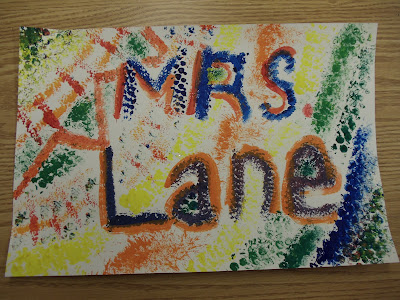This lesson focused on teaching texture through printmaking. As motivation for the lesson, the teachers had put random objects with varying textures into brown paper bags. To start off the lesson, students had to go through the line and feel the objects in the bags and write down what they thought they were. Once students were done with this part, as a class we went through what each item was. From this we moved into a discussion of various artists who utilize printmaking in their own pieces. We also discussed what texture means and how can be translated into our own projects in terms of actual and implied texture. We learned that actual texture has a texture that you can actually feel, and we learned that implied texture is the visual impression of a texture without the actual feeling of texture. From this we had a brief review of the primary colors, the secondary colors, and the intermediate colors. Finally, we moved into actually painting. Each student was given the three primary colors, along with various tools to print with including items such as corn on the cob, pinecones, sponges, etc. We were given time to practice a small sheet of paper before moving into our actual project. During the practice, the teachers explained how to put the paint on the objects before pressing them onto our papers. For the project, we were allowed to pick one of four types of projects, and I chose to utilize the name that I will have when I start teaching. We were required to utilize various types of textures, along with at least one primary, one secondary, and one intermediate color. This was very interesting because students were required to mix their own secondary and intermediate colors.
An extension activity for this project would be to teach students patterns in math and have them create their own patterned creations using printmaking. Students would have a visual representation of what a pattern is, and because it was more than just a pencil sketch, they would be more likely to remember the concept.

No comments:
Post a Comment